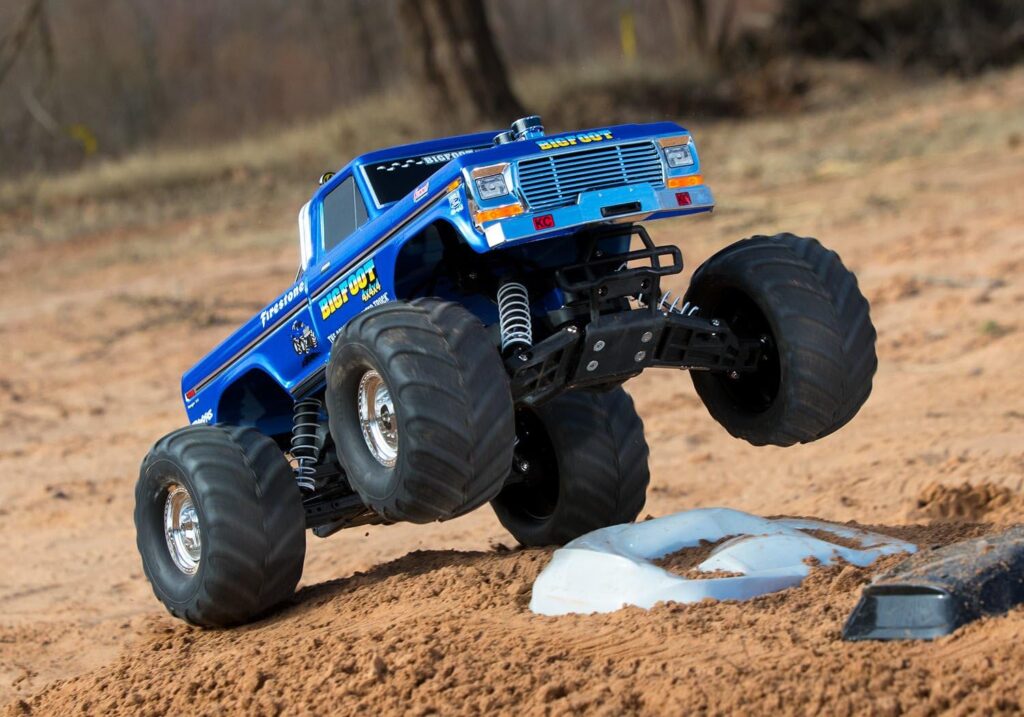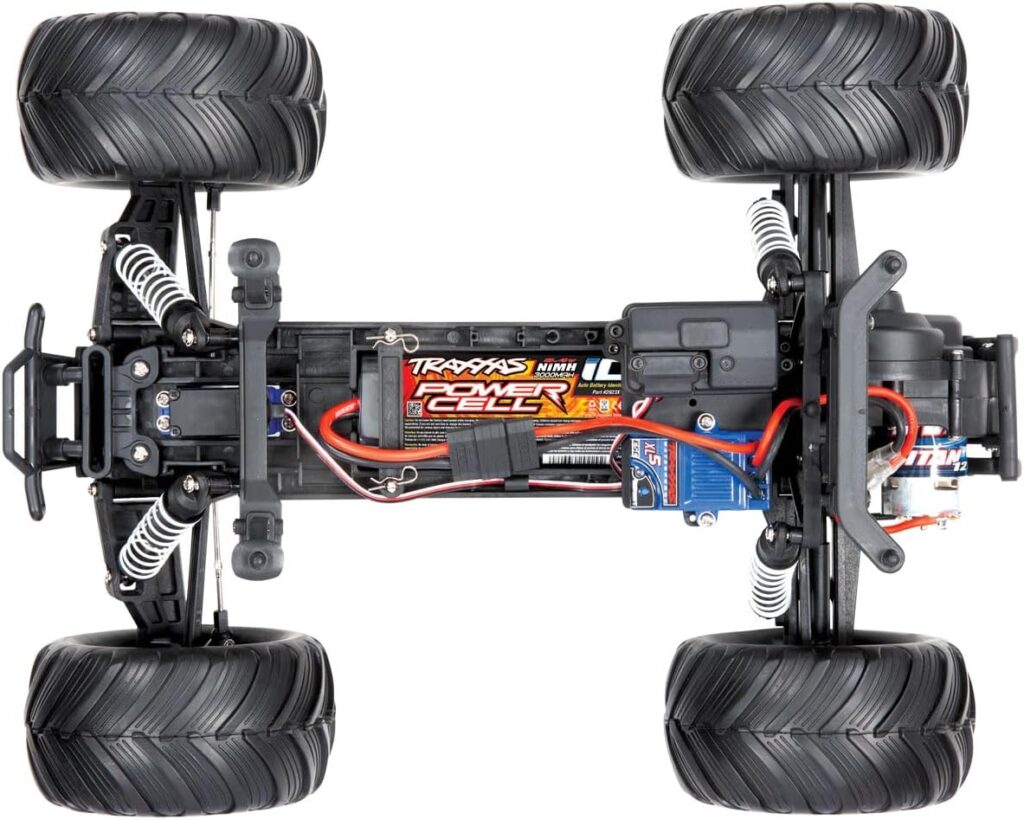RC cars require high-performance batteries that can deliver the speed and runtime needed for an enjoyable driving experience. Choosing the right battery for your RC car can be confusing given the many types available today including nickel-cadmium (NiCd), nickel-metal hydride (NiMH), lithium-ion (Li-Ion), and lithium polymer (LiPo). In this comprehensive guide, we will explore the key factors like voltage, capacity, weight, discharge rate, and more to consider when selecting an RC car battery. You’ll also learn best practices for charging, storing, and maintaining your batteries to extend their lifespan and ensure safe operation. Whether you’re new to the hobby or looking to upgrade your existing RC car, this article will help you pick the perfect battery and get the most out of it.

Types of RC Car Batteries
1. Nickel-Cadmium (NiCd) Batteries
Nickel-cadmium batteries are one of the older rechargeable battery types used in RC cars. NiCd batteries have a nominal voltage of 1.2V per cell and are known for their ruggedness, affordability, and high current discharge capabilities. However, they suffer from memory effect if not fully discharged before recharging. NiCd batteries also contain toxic cadmium, requiring special disposal. While they have fallen out of favor for RC use, NiCd batteries can still deliver moderate speeds and decent runtimes at an affordable price point.
2. Nickel-Metal Hydride (NiMH) Batteries
Nickel-metal hydride batteries offer higher capacities compared to NiCd and lack a memory effect, making them a popular upgrade. NiMH maintains a similar nominal voltage at 1.2V per cell. High discharge current abilities make NiMH a good fit for RC vehicles focused on speed and acceleration. However, NiMH batteries are less durable than NiCd and have higher self-discharge rates. While more costly than NiCd, NiMH batteries provide better overall performance.
3. Lithium-Ion (Li-Ion) Batteries
With lightweight lithium cells providing up to 3.7V nominal voltage, Li-Ion batteries drastically improve power and runtime compared to NiCd or NiMH. Their high energy density also reduces weight. Li-Ion batteries have no memory effect and low self-discharge levels. But they are more expensive than NiCd or NiMH and require protection circuits to maintain safe cell voltages. Li-Ion batteries enable extreme speeds and long run times in RC applications.
4. Lithium Polymer (LiPo) Batteries
Lithium polymer batteries offer the same high-performance benefits of Li-Ion with flexibility in form factor made possible by their polymer gel electrolyte. LiPo packs come in a huge variety of sizes and shapes to fit any RC chassis. Extremely low weight coupled with very high discharge capabilities make LiPo batteries the go-to choice for competitive RC racers and enthusiasts seeking maximum speed and acceleration. But LiPo batteries require extra care to prevent damage from improper charging or handling.
List of the Best LiPo batteries for RC Cars
Choosing an RC Car Battery
1. Capacity and Runtime
Capacity measured in milliamp-hours (mAh) determines how long a battery will last before needing recharged. Higher capacity batteries provide longer runtimes but are physically larger and heavier. Determine the runtime you need, then choose a battery capacity that matches. A good balance of capacity versus weight is important for RC use.
2. Size and Weight
Battery size and weight contribute greatly to a vehicle’s handling and performance. Larger battery packs provide more capacity and runtime but add bulk and reduce acceleration/top-speed. Smaller packs save weight yet may require more frequent recharging. Consider the size of your chassis when selecting batteries to find the best fit.
3. Discharge Rate (C Rating)
The C rating denotes a battery’s discharge current ability. A higher C rating means the battery can handle greater amp draws for increased power output. Choose a battery with a discharge rate that meets or exceeds your RC car’s amperage demands for top speed and acceleration.
4. Charging Method and Cycle
Batteries require a specific charging method (constant voltage or CC/CV) and cycle (number of charges supported). Match your charger’s specifications and choose a battery rated for at least 300 charge cycles. Follow the battery manufacturer’s charging guidelines for safety and longevity.
5. Operating Temperature Range
RC vehicles generate significant heat in motors and batteries. Check the battery’s safe operating temperature range and ensure your climate conditions are supported. Batteries perform best at normal ambient temperatures.
6. Price
Higher-performance battery chemistries cost more. Consider your budget but don’t sacrifice safety or compatibility. Choosing the right battery for your needs will provide the best value over time.

Using and Maintaining RC Car Batteries
1. Proper Charging Methods
Always follow the battery and charger manufacturer’s instructions for charging. Use the recommended charge rate and do not exceed the maximum voltage. Fully discharge batteries before charging to avoid memory effect. Avoid leaving batteries charging unattended. Charging batteries immediately after use while warm may shorten lifespan.
2. Storage and Transportation Considerations
Partially charge batteries for storage to avoid imbalances. Store batteries at room temperature away from moisture and metals. Transport batteries in lipo safety bags and avoid direct heat exposure. Never ship damaged or puffed batteries. Remove batteries from vehicles before transporting.
3. Battery Cycle Life
Batteries have a limited lifespan measured in cycles (one full charge and discharge). Average cycle life is 300-500 cycles for most RC batteries. More expensive batteries may last for 1,000+ cycles if properly maintained. Replace batteries once you notice significantly reduced runtimes.
4. Replacing Batteries
When replacing your RC car’s battery, select a new battery with specifications that match or exceed the original. Never substitute batteries with different voltages, connectors, or dimensions that don’t fit your vehicle.
5. Battery Safety
Take care to avoid puncturing or damaging RC battery packs. Immediately dispose of any bulging, dented, or damaged batteries. Always handle, charge, and discharge LiPo batteries with extreme caution to avoid fire. Store and charge batteries in a fireproof container. Never leave charging batteries unattended.
Final Thoughts
Selecting the right rechargeable battery is critical to getting the best performance and runtime from your RC car. As we’ve covered, you must consider the battery type, capacity, dimensions, discharge rate, charging method, and other key factors that match your vehicle and desired usage. Nickel-based batteries like NiCd and NiMH provide affordable options, while Li-Ion and LiPo batteries deliver superior power and speed capabilities. Whichever chemistry you choose, be diligent in following manufacturer charging guidelines and safety best practices.
With proper care and maintenance, your batteries will deliver many hours of satisfying runtime over hundreds of cycles. Check voltage levels before and after runs, inspect batteries for damage regularly, and replace them once capacity diminishes substantially. Investing in the right batteries for your RC model and taking steps to maximize their lifetime will keep you racing across the terrain for years to come.
Enjoyed this guide of RC car batteries? Then be sure to check out our other guides.




